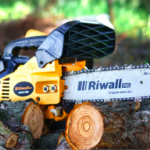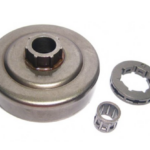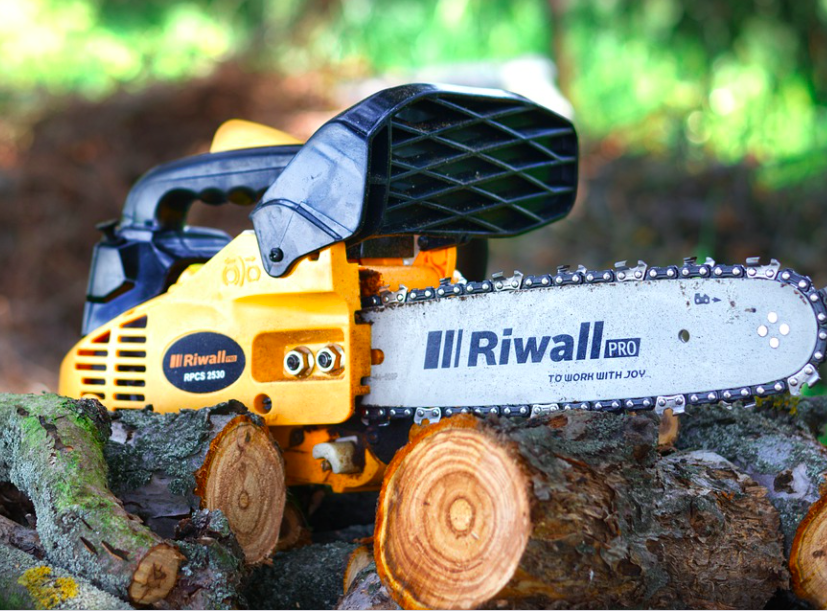How to use a chainsaw: instructions and device maintenance
In this article you will learn what a chainsaw is, what you need to do before starting the saw, how to turn on the chainsaw, instructions for using chainsaws, how to cut down trees with a chainsaw, safety precautions when working with gasoline saws, maintenance of a gasoline saw.
Chainsaws are popular in manufacturing/mining, repair, construction and household applications. Every master who has just purchased a chainsaw wants to test it as soon as possible. If you have not used such equipment before, we recommend that you stop and figure out how to use a chainsaw.
All recommendations for using the tool can be divided into the following groups:
- Checking, preparatory work.
- Inclusion.
- How to use. How to fell trees
- Safety precautions.
- Device care.
Let's look at them in order.
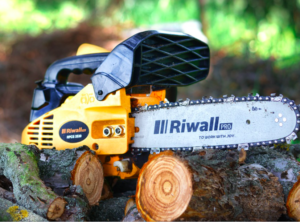
The content of the article
Checking and preparatory work before using the chainsaw
Preparatory work includes refueling, checking/inspecting equipment, and lubricating/filling with oil.
Chainsaws have a two-stroke internal combustion engine, so they cannot run on pure gasoline. Chainsaws are filled with a mixture of oil and gasoline.Requirements for gasoline: it must be fresh, high-octane, clean, unleaded gasoline of the AI-92 grade.
Why? Two-stroke engines are designed in such a way that only one specific gasoline can burn properly - high-octane. If it’s clear with a clean one - contaminants will clog the elements and filters of the engine, the device will not work effectively/easily, then what about the unleaded one?
Leaded gasoline is gasoline with metal additives, most often lead, with an alcohol/ether additive base. Because of this, it ignites/burns easier. Two-stroke engines are not as powerful as four-stroke engines. They cannot use regular fuel on a regular basis - they find it difficult to light it.
What about freshness - gasoline erodes and decomposes. That is, over time, gasoline loses its properties - after four months of inactivity, it burns 30% worse, after six months it burns 50%. We do not recommend using gasoline from last season if you do not want to damage your equipment.
Why AI-92 and not AI-95? You can also use AI-95, but it depends on the chainsaw. Middle class chainsaws will not be able to work for a long time on 95 gasoline. It is considered more environmentally friendly, explosion-proof and of higher quality, but the point is in its additives. They reduce the possibility of an explosion, however, gasoline burns worse because of this, so we recommend using AI-92 gasoline for chainsaws of the lower and middle classes. Expensive chainsaws - depending on the situation 92/95. In general, first look at the instructions. The manufacturer always indicates which fuel is best suited for the device.
Oil requirements – specialized oil for chainsaws/branded oil, which is recommended by the manufacturer in the instructions. Regular motor oil will not work.The chainsaw may start a few times, but then get ready to go to the service center - the engine oil will clog the filter and carburetor. Although motor oil and chainsaw oil are similar, they are different. We do not recommend using waste oil, surrogates and motor oil to refuel the engine of chainsaws.
You also need to keep an eye on the viscosity of the oil - oils with low viscosity freeze at lower temperatures. Synthetic oils with viscosity W30/W40 are used for work in extreme conditions. They freeze at -40, mineral ones already at -20. All data is in the oil viscosity table.
Preparing fuel for a chainsaw. It is prepared from gasoline and chainsaw oil. You need to mix the ingredients in a ratio of 1 to 50 - 20 milliliters of oil per liter of gasoline - and shake.
Sometimes chainsaws have a ratio of 1 to 40, so check the instructions before mixing liquids. The manufacturer indicates the brands of recommended gasoline, oil, their mixing proportions, and shelf life. The standard shelf life of such fuel liquid is 2 weeks. Afterwards its use is not recommended.
Pour the prepared mixture into the gas tank. Do not confuse it with the oil tank - they are usually located next to each other. You can distinguish tanks by their size - the gas tank and its neck are larger, as well as by their caps - a gas pump is drawn on the lid of the gas tank, and a drop is drawn on the lid of the oil tank.
Filling with oil and lubricating the saw bearing. Oil is poured into the oil tank; we wrote above how to distinguish between it and the gas tank. Fill it only with proven branded oil, which is indicated in the instructions.
To extend the life of the chainsaw, you need to lubricate the bearing every month. It is located at the end of the bus inside the main unit. There is a hole nearby; you need to pour a few drops of oil into it - use a syringe.
How to turn on a chainsaw
The section consists of several stages: checking the tension, turning off the idle speed, starting, checking the oil supply.
Checking tension. Before starting the chainsaw, check that your chain is properly tensioned. From below it should hang 4-6 millimeters; if you pull on the top links they will rise. Pull the chain along its movement - it should move with little effort.
Idling is a condition in which the device’s engine is running, but does not transmit torque to the working elements. It is turned on to warm up the device, create gaps between the cylinder and the circle, and warm up the fuel mixture. On a chainsaw, the idle speed is controlled by the position of the chain brake. Chain brake is a plastic shield, a regulator that connects/disconnects the motor shaft. It is located near the front handle. To turn idle on, pull the control away from you.
Starting a chainsaw
- Place the unit on the floor and support it with your foot.
- Press and hold the power button.
- Open the damper.
- Pull the cord. To avoid tearing it, you need to tighten the handle and pull with medium effort.
- When the engine starts, close the throttle.
- Turn off the chain brake if it was on.
Before using the tool, you need to warm it up.
You only need to open/close the throttle valve when turning on a cold engine. When starting a heated chainsaw, you can leave the damper alone.
Checking chain lubrication. Simply place your hand, a piece of paper, a board, or something clean on the bottom of the saw. If there are oil stains on the object, the chain is lubricated. If there are practically none, it means there is no oil in the oil tank or the supply system is clogged/broken.
Safety precautions when working with a chainsaw
You need overalls.We all understand that a chainsaw is a dangerous tool. Improper use can result in deep wounds or loss of limbs.
Gloves will protect your hands and fingers from sharp saw teeth and cuts. When the hand is near the working part of the saw, it begins to be sucked in. This is due to the high speed of rotation of the chain - it creates an air flow, which pulls the hand. When they come into contact, the glove fabric is first wrapped around the chain.
Headgear (helmet, plastic cap) will protect your head from branches and fallen chains. Safety glasses will protect your eyes from dust and flying particles.
Metal plates are sewn into specialized shoes. They protect their legs from the chainsaw, taking the blow on themselves.
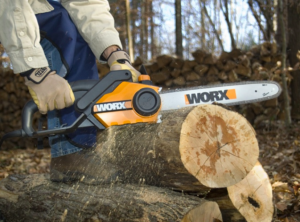
How to use a chainsaw
- Hold the saw firmly by the handles (working hand on the rear handle, the other hand on the front)
- Place your feet securely and wide. They should be to the side of the cutting line.
- The back should be straight.
- Don't bend over when cutting.
- Saw with the main part. Sawing with the tip is dangerous - there may be a kickback, the chain may get stuck or fly off.
- You can cut on both sides of the tire. When you cut with the lower one, the device pulls forward, while the upper one pulls backwards.
- You can carry the chainsaw with it turned off or at idle speed (pull the shield near the front handle towards you).
How to cut down trees with a chainsaw. Rules for sawing branches with a chainsaw
Trees are cut in several stages:
- Choose the side where it should fall.
- On this side, make an even cut to a depth of ¼ of the diameter of the tree.
- Above, you need to make a second cut at an angle of 30 to 45 degrees.
- Remove the cut wedge from the wood.
- Saw the tree at the level of the wedge on the opposite side until it begins to lean. You can insert a wedge to prevent the saw from getting jammed
- Quickly put the chainsaw away and step aside.
Due to incorrect calculations, wind speed, and transfer of trunk mass, it may fall to an unplanned place, so when a tree falls, do not take your eyes off it.
Most injuries occur when sawing branches. To avoid injury, follow these rules:
- You cannot cut above your shoulders, and keep the chainsaw at a great distance from you.
- If the saw gets stuck in a tree/branch, do not pull or start it. Lift the trunk/branch, widen the cut and remove the tool.
- Place clamps under the barrel to prevent it from tilting/moving during operation.
- Trim the lower branches first.
- Thick branches are sawed from end to trunk.
Chainsaw care
- Clean the device from dirt after finishing work.
- Check whether the chain is tensioned (described above).
- Check the air filter every few months, otherwise you will have trouble turning on.
- Do not leave fuel in the tank - either run until it runs out or drain it into a container. You can store a mixture of oil and gasoline for no longer than two or three weeks.
- Inspect the engine and carburetor once a season.
- Change the chain, tire and sprocket - they most often wear out.


